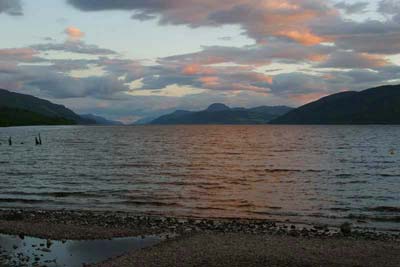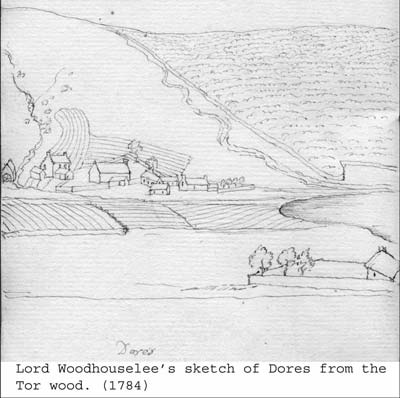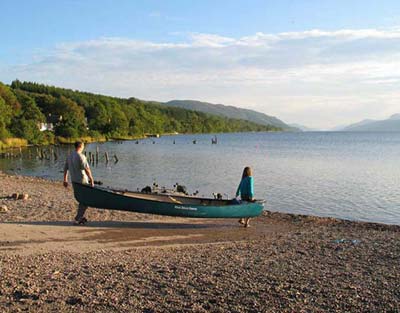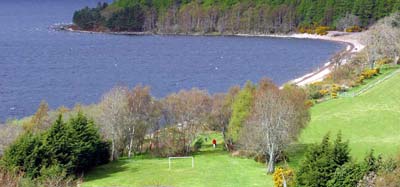Location
The village of Dores provides a dramatically picturesque gateway to South Loch Ness. The location looks, and feels, like the very end of the Loch, even if, in strict geographical terms, there is a short distance to go.

From any point on the long shingle beach which arcs away from the Dores Inn the view is awesome, 22 miles down the narrow loch towards Fort Augustus, with the steep sides of the Great Glen fault rising over 1000 feet on each side. It is a view that is photographed over and over again – different every day, every hour, as the light and the weather changes with infinite variety. On a calm day, strange mirages warp the distant horizon, and when the prevailing wind blows it drives waves the whole length of the Loch to crash onto the beach.
History

Dores has never been a large community – an 18th century sketch shows a few dwellings centred around the church, rather than on the bay where most of the houses are now. Before the Caledonian Canal was built in the 1820s boat travel would have had to terminate at the end of the Loch, but the lack of sheltered moorings or jetties at Dores meant that much of this activity would take place at Aldourie or Bona. Bona itself was of greater significance, as the river there was fordable until the loch level was raised by the construction of the canal, and travellers and drovers would often have come this way rather than going all the way to Inverness. Wade’s roads, linking the military garrisons at Fort George, Fort Augustus and Fort William, passed through Dores, so the major land route from east to west would have been on this side of the loch.
In the first half of the 20th century this small village actually boasted one of those icons of the industrial age, a large brick smokestack, associated with the timber mill that serviced the large scale felling programmes that took place during this period. Already out of use by 1939, the people of Dores decided it would be prudent to demolish it, so as not to attract the attention of the Luftwaffe bombers, who did, in fact, make an attack on Foyers, ten miles further down the Loch.
Another interesting interlude in the history of Dores was the brief existence there of an “Arts and Crafts” pottery, in the first decade of the 20th century. The driving force behind the project was Mary Watts, wife of famous 19th century artist G.F. Watts, whose objective was to teach and encourage local people to develop their artistic skills.

From the closure of the Pottery to its demolition in around 1950 the building was occasionally used as a Community Hall, and the new Hall was built on the same site.
In the 21st century Dores is primarily a very pleasant dormitory village for people whose work is in Inverness. It provides a popular destination for day visitors from Inverness and for tourists from further afield, many of whom enjoy the spectacular walk along the beach and into the woodland around Torr Point.

This article was written by The South Loch Ness Heritage Group.